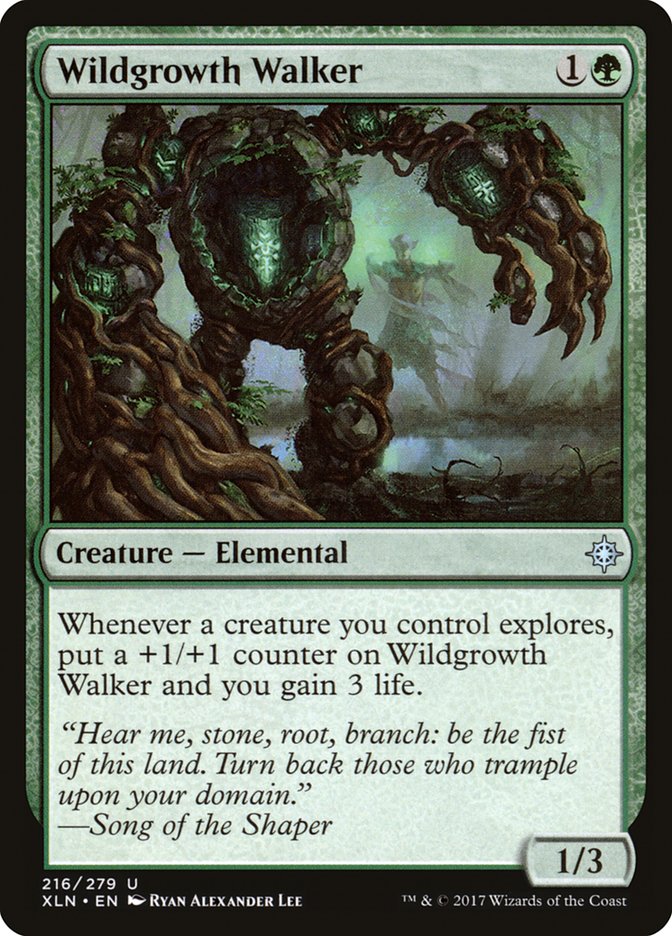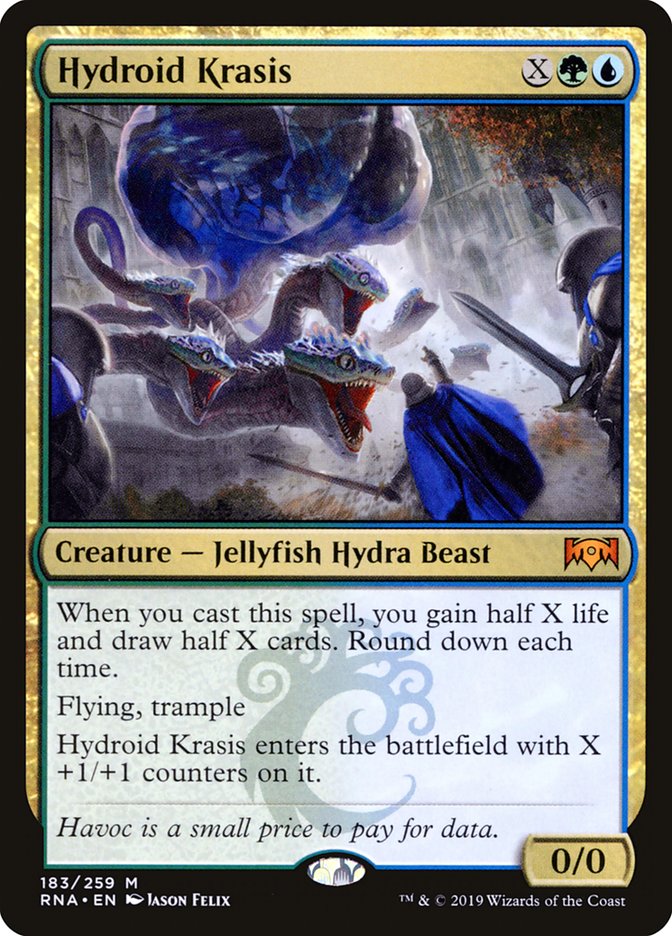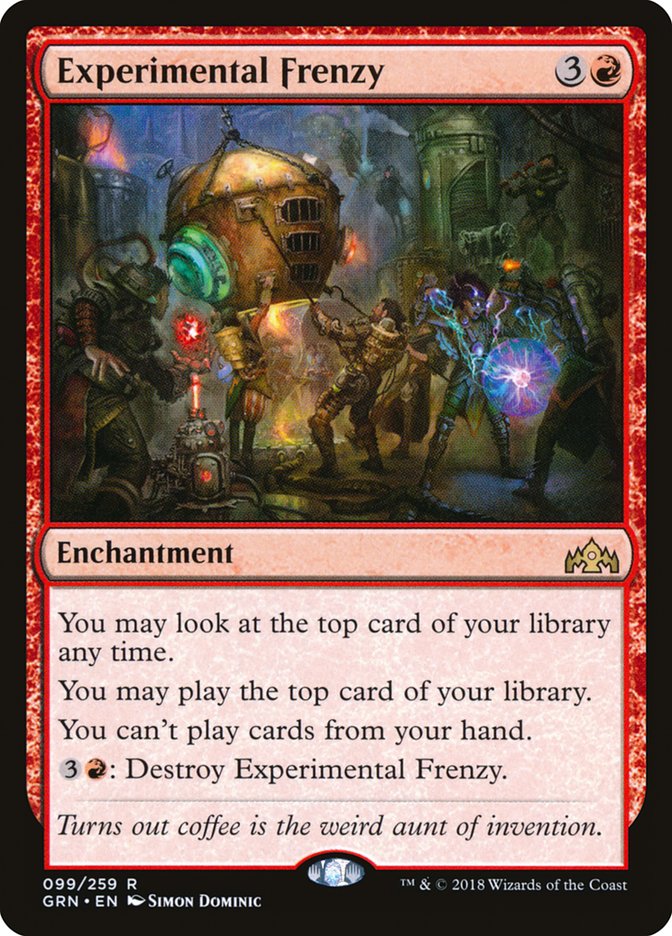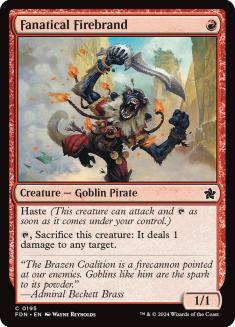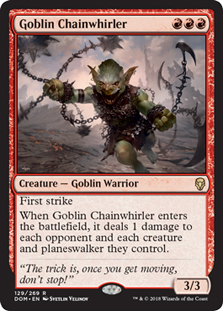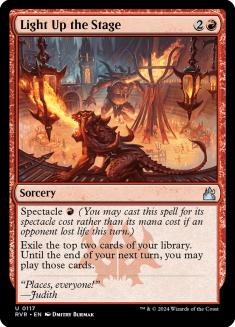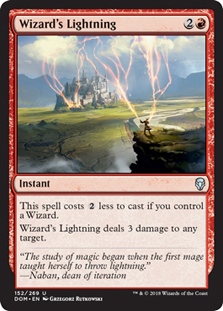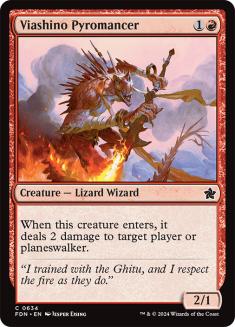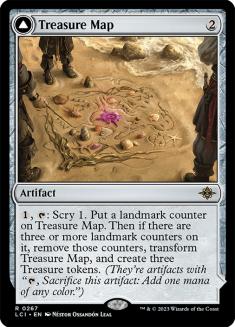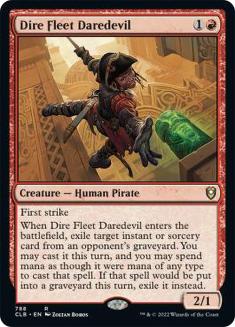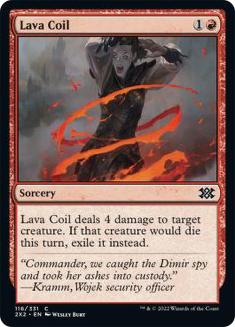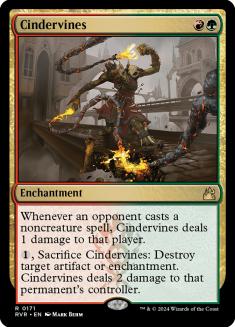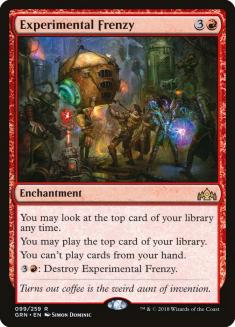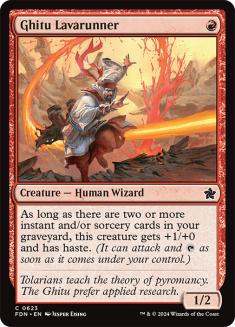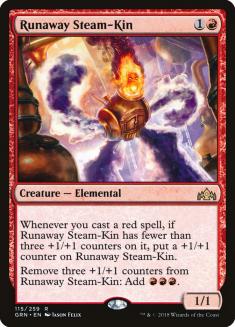I’ve been chasing success at the Mythic Championship level for quite some time, mostly by trying to imitate what I think other successful people are doing, and failing. I’ve tried almost everything, from buying into the (very flawed!) conventional wisdom that “good players don’t play aggro decks, they play control;” to designing complicated theoretical systems for analyzing the strength of Limited cards; to taking on a project manager-esque role when organizing pro testing teams.
Nothing ever seemed to work.
The thing I never really tried was trusting that I’m good enough to draw reliable conclusions from games that I myself have played. That is pretty much the only thing you can do that doesn’t rely on someone else’s input. Not that input from other people is bad, in fact quite the opposite – the fastest and most reliable way to get better at Magic is to play a lot of games with people that are more skilled than you. It’s just that there are no shortcuts. The biggest lesson I’ve learned from my lengthy pro career is that while things like theory, organization, structure, logistics etc. are really nice, they’re not quite a substitute for rolling up your sleeves and actually playing Magic.
How I Landed on Red Aggro
My Standard experience got started with the best-of-one ranked queue on Magic Arena. This was in January – right after Ravnica Allegiance was released, but right before the update that let you climb the ladder playing best-of-three. My preference was to get to Mythic and climb the ladder over playing complete matches, so I tried as many decks as I could courtesy of the Twitter account @arenadecklists. The metagame near the top of Diamond quickly converged to red decks and the decks built to beat them, so I played a lot of games with both. I made it to Mythic with a few days left in the season.
A big update came to Arena in February, and that was to allow best-of-three matches count toward your ladder climb. This was huge, since it meant you could start to play matches that were useful to practice and also climb the ladder. Once I made it to Diamond, I noticed that Sultai Midrange and Esper Control were winning the most, and red decks were nowhere to be seen. That, plus the results of the Star City Games Open in Indianapolis, led me to believe that Sultai and Esper were the best two decks in the format and that red was “bad” because it was too easy to beat with Wildgrowth Walker and Hydroid Krasis. Neither of those decks appealed to me because I didn’t really care to learn how to slog through mirror matches, but I still started playing matches with them on the ladder to familiarize myself with them.
I preferred Sultai to Esper, and in playing matches with that, I kept getting destroyed by what I thought was a bad meme deck, the Mono-Blue Curious Obsession deck, complaining about how perfect their draws needed to be every time to win. It only took eight or nine match losses to that deck before I decided to just try it myself, and was so impressed that I took it to my RPTQ, choosing that over the Open Weekend in my backyard of Baltimore.
I was swiftly destroyed in two matches by two red decks, wondering how anyone would be crazy enough to play red when Sultai and Esper were the best decks. Interestingly enough, my first-round opponent in the RPTQ had the green splash in their red deck, so I can’t even begin to take credit for the version of the deck I ultimately played in the Mythic Championship.
Frustrated, I went back to Sultai until I saw Ali Aintrazi winning in the Classic in Baltimore with a Simic Nexus of Fate deck. These types of decks existed before, but without actually playing any games, I assumed it wasn’t good versus Sultai and Esper for Duress / Negate reasons. After trying the Simic deck, I had incredible results: I was beating everything that wasn’t white or red aggro. If I could just find a sideboard plan that brought my matchups against those decks to somewhere around 50% – I’d have taken 45%, even! – I’d have been thrilled with Simic as a deck choice.
Creatures (7)
Lands (25)
Spells (28)

I never found it, despite trying lots of different things. The closest I got was a few iterations on Kenta Harane’s decklist from the Grand Prix at MagicFest Memphis, but I still couldn’t win enough to feel confident. To make matters worse, my win percentage against the decks I was hoping to beat – Sultai and Esper – was dropping, as those players had a better idea of what I was up to. Still, I had nothing at this point. I had to submit a decklist in two days and I had played the most with Simic. It didn’t make much sense to register anything else.
It was at this point that pro player and long-time teammate Mark Jacobson posted a red deck in our Discord server. It had a green splash for sideboard cards, just like the one I lost to in the RPTQ. Most of the people that saw it dismissed it as bad, just like I had done a couple of weeks earlier. Too underpowered, they said. The only reason I thought to give it a try was because it was one of my near-0% matchups with Simic Nexus, and if other players had the same line of thought as me (that line of thought being “Sultai and Esper are the best decks and red is bad, so I can skimp on sideboard cards for red / play a Nexus deck that can’t beat red and feed on the midrange decks”), then maybe I can blindside them with red and feed on some Nexus decks.
I expected to beat Nexus decks and not much else, but something wonderful happened: I was winning matches against Sultai. I wasn’t just nut-drawing them, either. I was winning longer, more careful games where I played to Experimental Frenzy and then went off. Maximizing Frenzy and having a clean, not-always-dead answer for a large Hydroid Krasis gave me just enough power to feel like I was playing a reasonable deck. The most crucial part of this was that I was already very comfortable playing red strategies thanks to my obsessive ladder climbing in January. Time was running out, so I locked it in, and I was pleasantly surprised with an 8-1 record in Standard at Mythic Championship Cleveland before intentionally drawing into the Top 8.
The Deck Itself
Creatures (19)
- 4 Fanatical Firebrand
- 4 Ghitu Lavarunner
- 3 Goblin Chainwhirler
- 4 Viashino Pyromancer
- 4 Runaway Steam-Kin
Lands (21)
Spells (20)
Sideboard

This deck is an Experimental Frenzy deck first and foremost. Early iterations of the deck only had three copies in the maindeck with the fourth copy in the sideboard, but we decided that we would rather sideboard the fourth one out in matchups where we don’t want it (which are not all that many) than the other way around. Beyond that, don’t let the title “Gruul” Aggro fool you – it’s just a standard red aggro deck with some fancy Gruul sideboard cards.
My previous impression of red aggro was that it was a Goblin Chainwhirler deck, and that the only reason red was “bad” was because Chainwhirler was bad. I feel so silly that I didn’t realize you could just put fewer Chainwhirlers in your deck – it’s not a sacred cow.
This deck can be clunky sometimes when going off with Frenzy, but it’s still a reasonably good mix of being low and fast enough and having enough draw power to keep up in grindy games.
Matchups
VS Sultai Midrange
Out:
In:
Their primary gameplan is to curve Wildgrowth Walker into Jadelight Ranger, so your primary gameplan should be to prevent that from happening. Removing Walker from the battlefield is more important than anything else you can be doing on Turn 2, so you want to max out on Lava Coil. After that, prepare for a grind. Having access to Collision is nice to make sure you aren’t caught off guard by a huge Hydroid Krasis, but it’s not necessary to have all three.
VS Esper Control
Out:
In:
This matchup all depends on how prepared your opponent is for you. There are some Esper Control decks that look like nightmare matchups, and others that are a walk in the park. In either case, the plan is to try to get as much of a mana advantage as you can in the first few turns, and then finish them off with burn spells or stick Experimental Frenzy when they tap low. Don’t be surprised if they sideboard in Lyra Dawnbringer, so be ready to hedge with Collision.
VS Nexus of Fate Decks
Out:
In:
This is one of your better matchups. It’s not very hard to go under this deck, and your burn spells can help finish the job even if they stay alive with Root Snare. Collision can help clear a Hydroid Krasis if it manages to make an appearance, but you mostly prefer to cast Colossus for the cheap, fast damage. If it’s the Gates variety of Nexus, keep Shock in and cut Fanatical Firebrand instead, since you want to minimize your exposure to Gates Ablaze.
VS Esper Midrange
Out:
In:
Just like Esper Control, this matchup can depend on how much they prepare for your deck. If they’re relying too much on Thief of Sanity and Deputy of Detention, your damage spells can keep the battlefield clear and ride your constant mana advantages to victory as they spend three or four mana to remove your one- or two-mana creatures. Between Basilica Bell-Haunt and Seraph of the Scales, Lava Coil might have to work overtime after sideboarding, so be considerate when using your removal.
VS Mono-White Aggro/Azorius Aggro
Out:
In:
This matchup has reasonably straightforward gameplay, but there are a lot of options for sideboarding. Cindervines can actually be useful here if they lean too hard on enchantment removal like Conclave Tribunal or Baffling End, and Collision can be necessary if they have Lyra Dawnbringer. If you need more cards to sideboard out, trim copies of Wizard’s Lightning, since it’s more likely that you’ll pay full price after taking out half of your Wizards.
VS Mono-Blue Aggro
Out:
In:
Try not to wait to kill creatures in this matchup – they will strive not to deploy the important ones or cast Curious Obsession until they can protect them with counters or Dive Down. Runaway Steam-Kin is one of your best cards here, so prioritize casting it early. Ghitu Lavarunner gets the axe after sideboard because it’s extremely vulnerable to Merfolk Trickster and it makes Entrancing Melody a very good three-mana tempo play.
VS The Mirror
Out:
In:
The approach to the mirror is to reduce your exposure to Goblin Chainwhirler and turn into a control deck. This approach will be less effective as more players adopt the Gruul sideboard cards, but Cindervines gives you the upper hand as it bleeds your opponent slowly and allows you to keep both Experimental Frenzy and Treasure Map in check.
VS Izzet Drakes
Out:
In:
Shock is more useful if they’re playing the version with Arclight Phoenix, but in either case your gameplan is the same – try to kill all their creatures. Dive Down isn’t uncommon, so don’t be surprised by it – be patient with your removal spells and try to set up end-of-turn double plays on their creatures. Goblin Chainwhirler is useful to pair with Lightning Strike as a way to take out a Drake in the late-game.
***
Going forward, the core of the deck is still really strong, so I wouldn’t change much fundamentally. No piece is so important that it can’t be moved around, so changing around the numbers on some of the cards to suit your tastes is perfectly fine. Some possibilities are cutting a Goblin Chainwhirler, cutting a Fanatical Firebrand, cutting the Dire Fleet Daredevil, adding the fourth Collision, or adding Skewer the Critics.
Do I think this deck is good? Ehhh. I’d play it again just because I really don’t like any of the other decks – they all have some flaw that’s too big for me to get over, but right now I think the best deck is probably a really tight version of Mono-Blue Aggro played by a really experienced pilot. I definitely wouldn’t listen to the haters, though – this deck isn’t bad. This Standard format is surprisingly balanced and I think anyone has a shot with any reasonable deck as long as they’re practiced enough.
I haven’t quite finished processing the results of the weekend and why I haven’t really succeeded at this level until now, but I suspect that it had to do with the fact that I just straight up played a lot of Standard. To be honest, I haven’t actually done that before. Nothing fancy, just lots and lots of games played and having Magic Arena be such a fast, pleasant experience helped a lot with that. That’s why I knew how all the matchups went and that’s why I felt comfortable picking up a different deck 72 hours before decklists were due.
No shortcuts. I’ll have to try that again next time.


